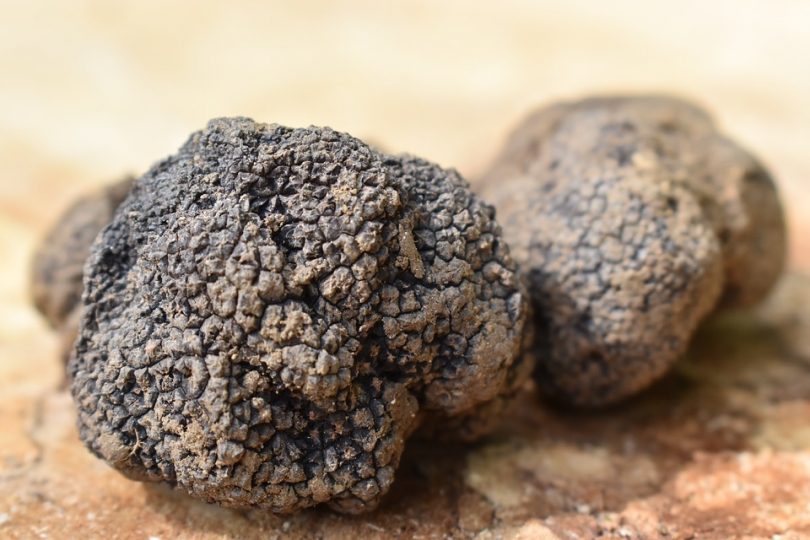Truffle spores are dispersed throughout the environment by the animals that eat them. In other words, truffles’ survival depends on them being eaten. As is usually the case with nature and the interconnected processes that are its fabric, truffles seem to have developed a wondrous mechanism to ensure their survival. And it happens to be tied to endocannabinoids.
The dark brown pigment melanin is key to truffle development and reproduction. [1] Previous research [2] established a connection between lipid signals, endocannabinoids, and melanin synthesis in human skin cells. Thus, a team of Italian scientists dove into truffles’ chemical contents finding that the fungus produces the endocannabinoid anandamide in significant amounts. [1] Moreover, they probed a relationship between melanin and anandamide at different maturation stages.
The researchers revealed that truffles don’t express cannabinoid receptors, “suggesting that in these fungi, [endocannabinoids] are unlikely to regulate biological processes like melanin synthesis, maturation and differentiation, that in animals are controlled by [endocannabinoids] through CB1/CB2– dependent mechanisms.”
That said, anandamide levels were higher in later stages of maturation, as was melanin content, leading the team to speculate whether anandamide might somehow stimulate maturation and melanization processes of truffles.
Moreover, along with volatile organic compounds, anandamide may fuel ripe truffles’ aroma, which diffuses into the soil and attracts the truffle-eating animals that disperse the spores. These animals happen to be mammals that have well-developed cannabinoid receptors.
“In line with this, accumulated evidence supports an involvement of [endocannabinoids] in the initiation of the suckling response and in appetitive and consumption processes. In particular, [endocannabinoids] appear to be linked to both instigation of food seeking and eating initiation, and also to the orosensory or hedonic evaluation of food during eating.”
The scientists add that truffles produce enough anandamide to activate both CB1 and CB2 receptors. In other words, anandamide may help truffles attract mammals to eat them and respectively disperse their spores, doubling down by triggering rewarding processes in those animals; in layman’s terms, it may get them high.
“What would be really fascinating — not so easy to do but possible…is to really prove that having anandamides helps truffles to be chosen by the truffle eaters and then help the species…to spread in the environment better than species that might be devoid of anandamides,” says Mauro Maccarrone, one of the study’s contributors.
Image Credits: Mrdidg / Pixabay
References:
- Pacioni G, et a Truffles contain endocannabinoid metabolic enzymes and anandamide. Phytochemistry. 2014. Journal Impact Factor = 3.044; Times Cited = 13 (Semantic Scholar)
- Pucci M, et al. Endocannabinoids stimulate human melanogenesis via type-1 cannabinoid receptor. J Biol Chem. 2012;287(19):15466-15478. doi:10.1074/jbc.M111.314880. Journal Impact Factor = 4.238; Times Cited = 44 (Semantic Scholar)








